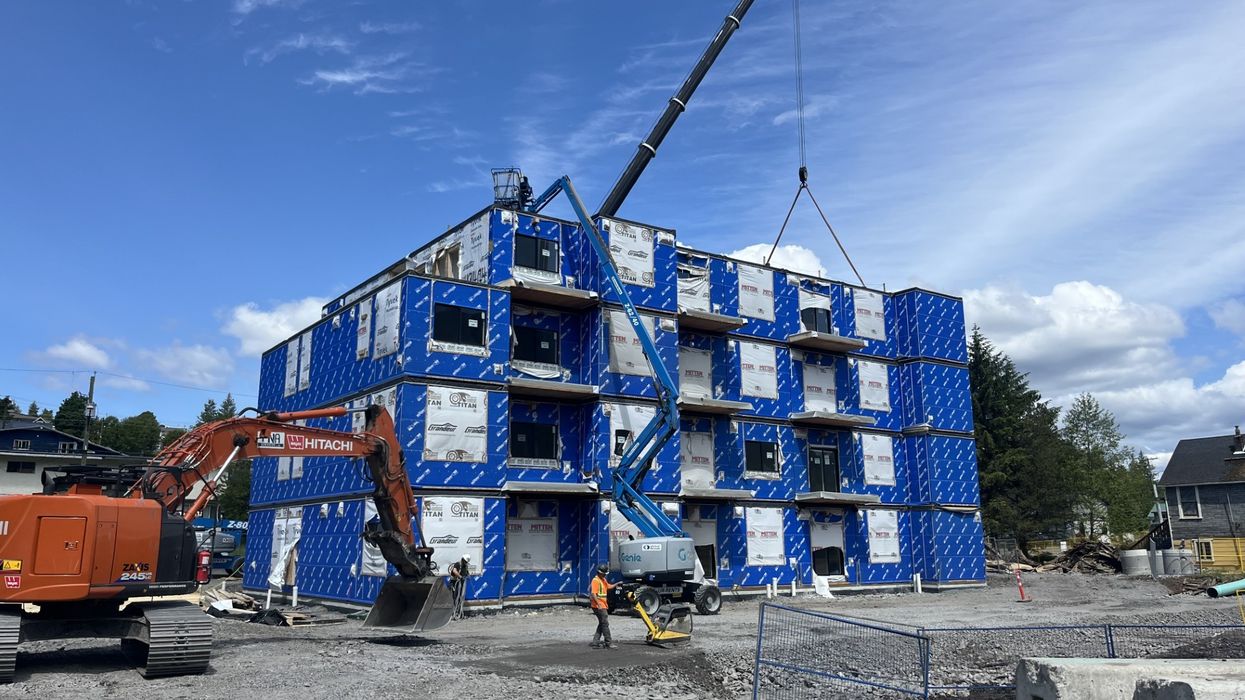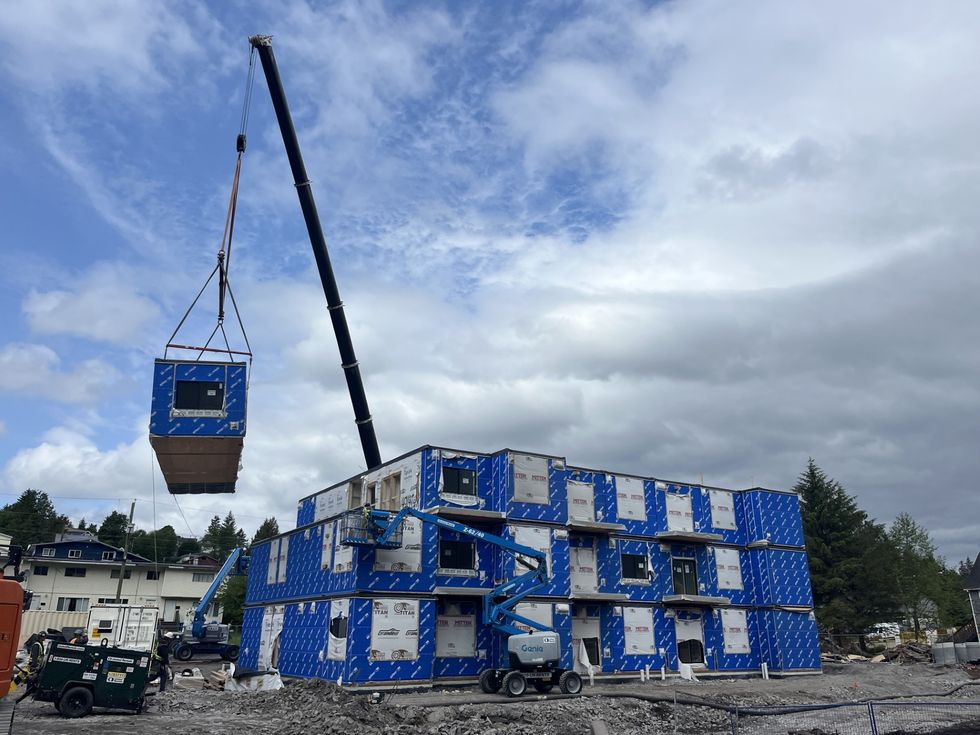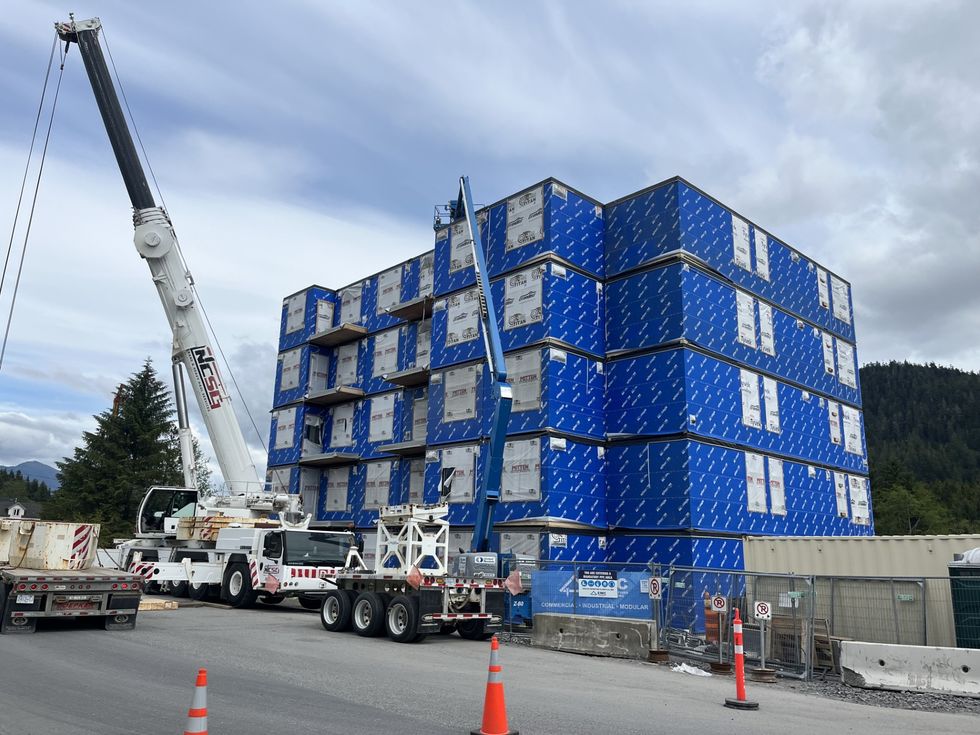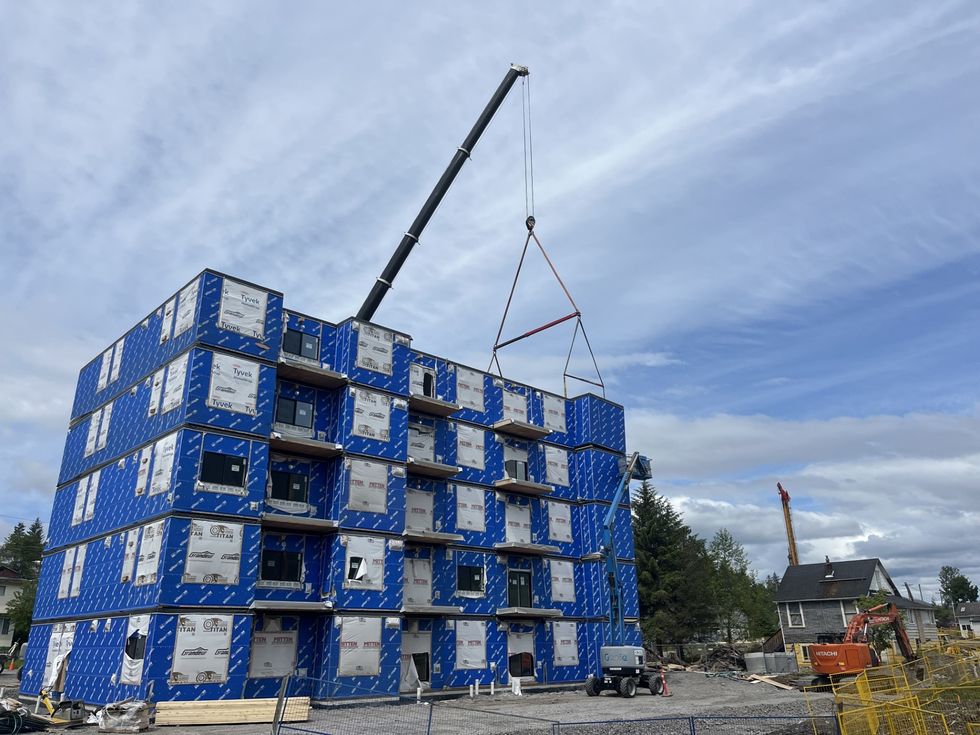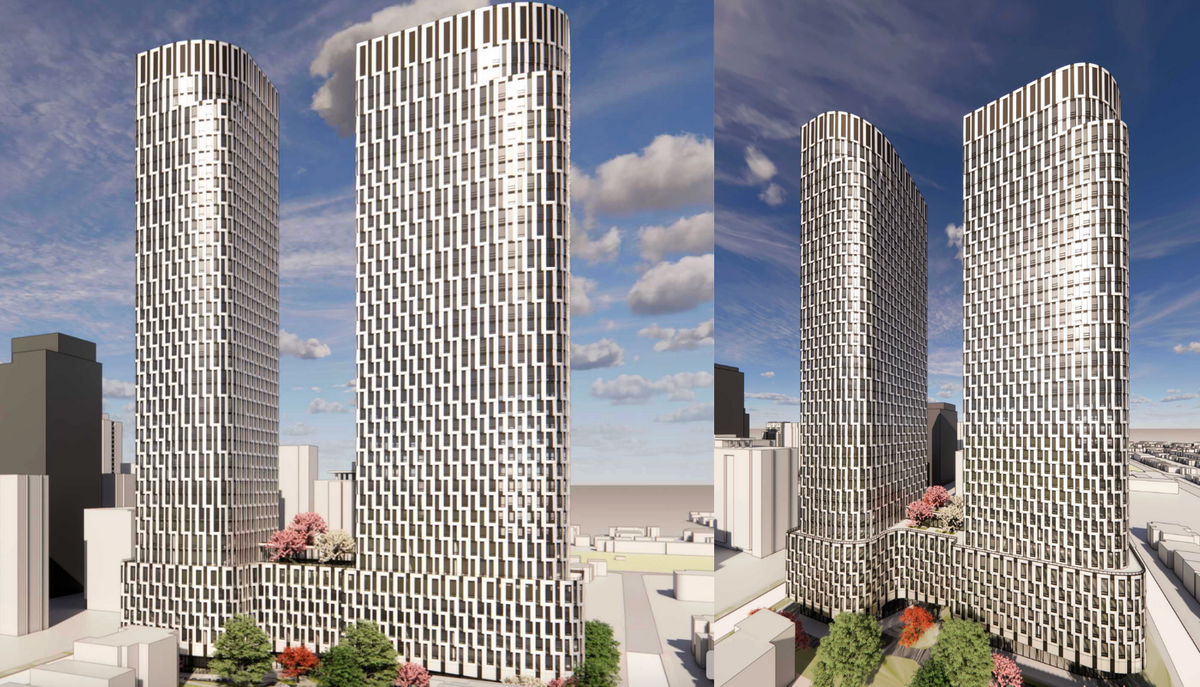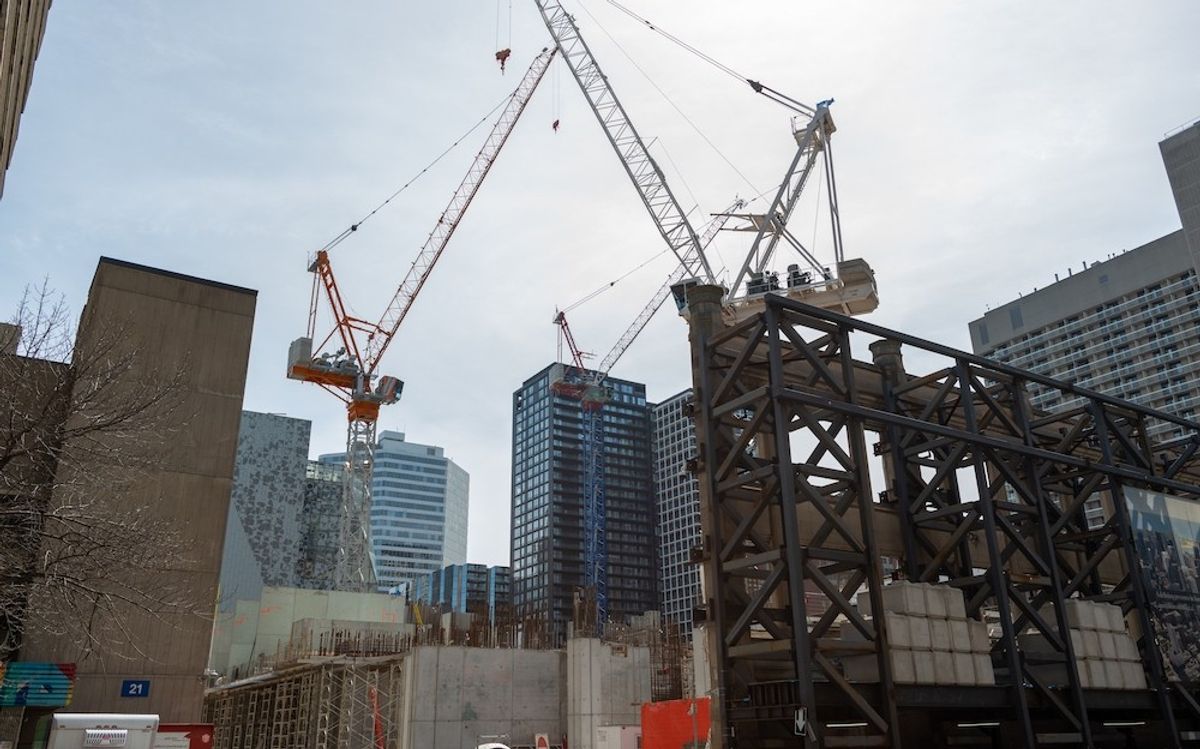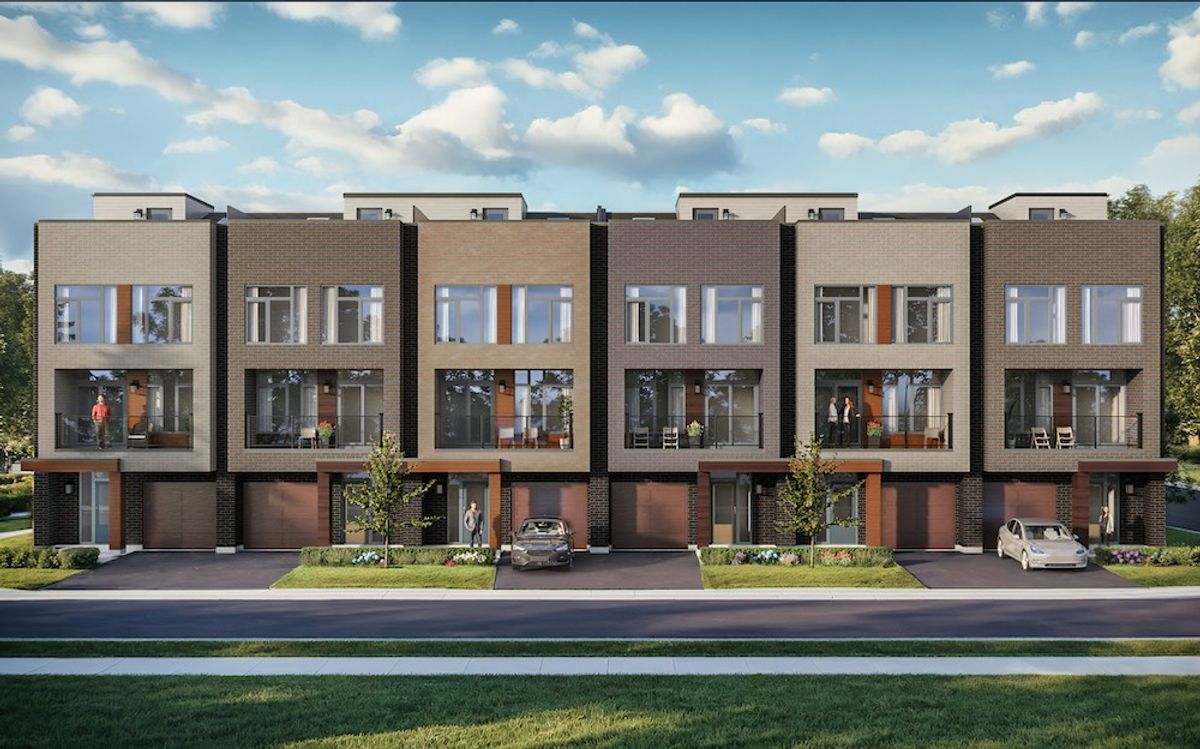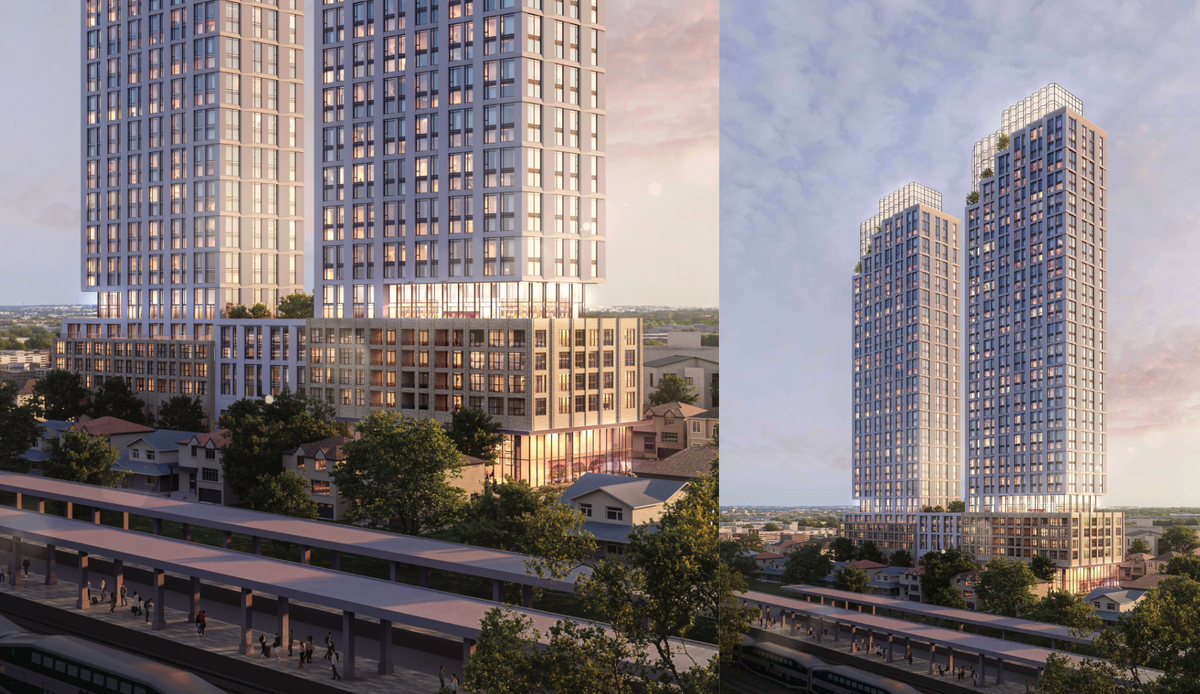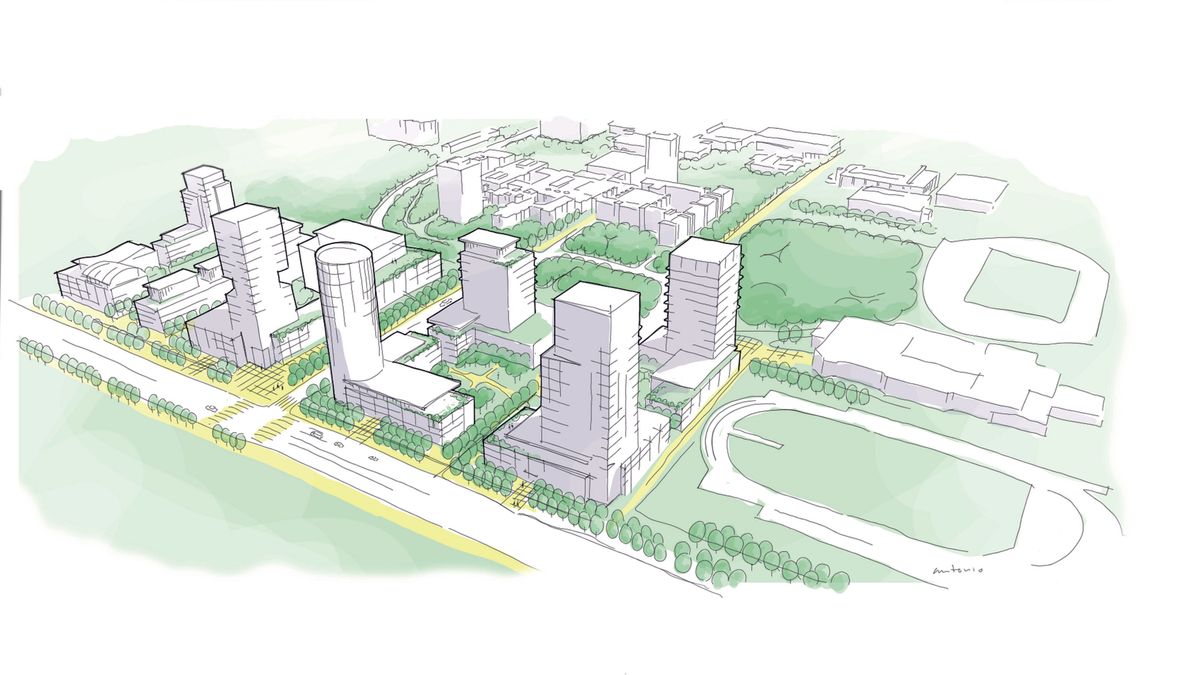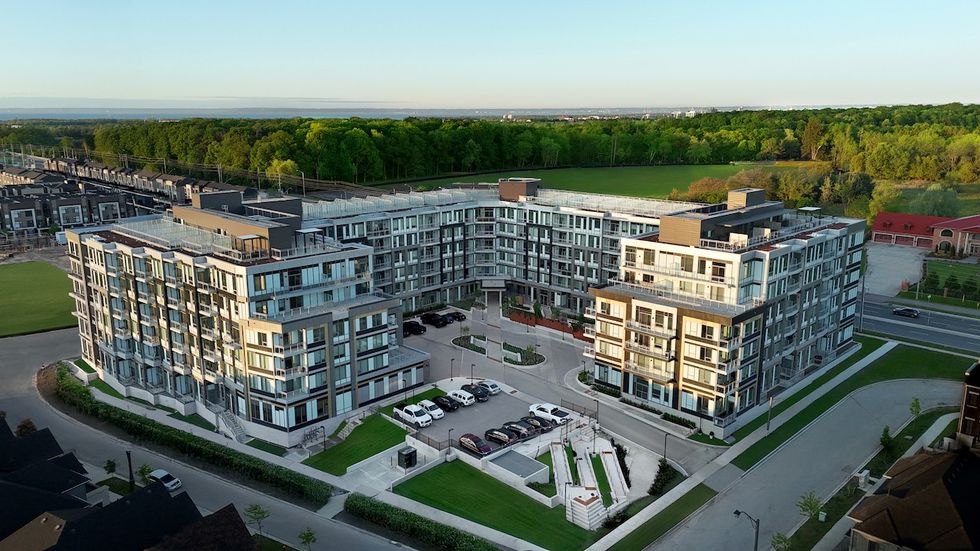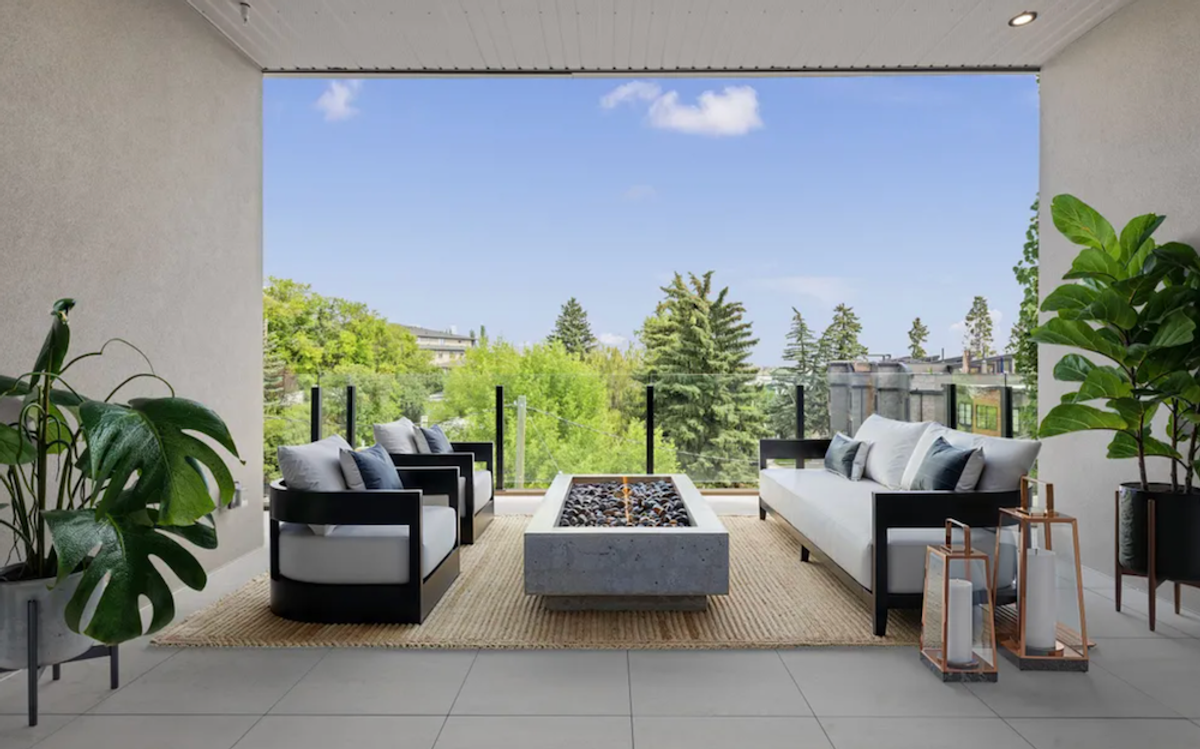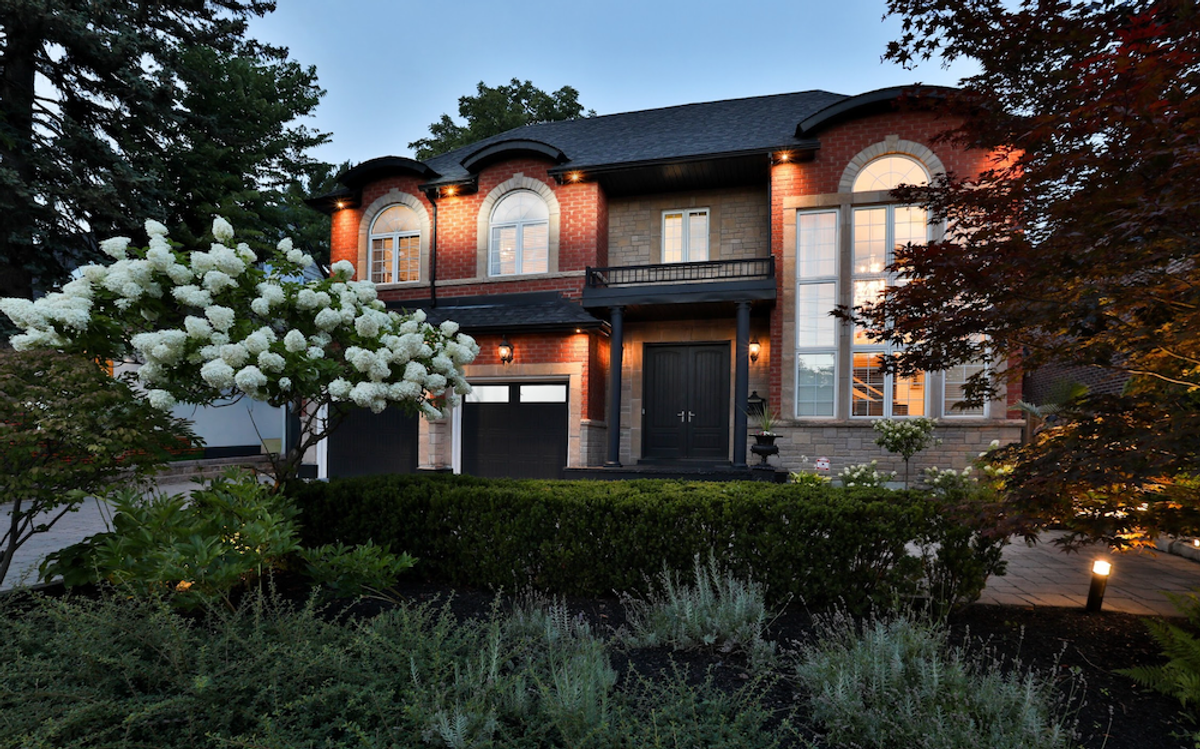Developer Gordon Wylie has worked on office buildings, all types of residential, real estate investment, and major shopping mall redevelopments, including project lead on the early iteration of Oakridge Mall during his tenure as Vice President, Development, for Ivanhoe Cambridge.
He was also key in the company’s purchase of Metrotown Centre, an expansion that helped transform Burnaby. Wylie says he’s always up for a challenge, and so it fits that he’s now one of the rare developers who’s embraced modular construction to bring desperately needed rental housing to BC’s northern city of Prince Rupert. The five-storey, 40-unit Estrella rental project is a test case for his company, NorthStar Development Corp., which handled the financing, development, and construction management of the new rental building. NorthStar builds office, retail, industrial, mixed use, and rental and condo housing, and partners with non-profits to deliver below-market housing.
Volumetric housing, or modular, involves factory built, Canadian Standards Association approved, enclosed units that are transported to site. Some units even include built-in furnishings such as Murphy beds. Because they’re built precisely, often with machine tool automation and within a temperature-controlled factory setting, the modules are extremely energy efficient.
For Prince Rupert, NorthStar assembled a construction team that’s skilled in factory-built construction, and they’ve acquired the modules from a long-established factory based in Winkler, Manitoba. Within five days this month, the modules were stacked on the city-owned site, and the residences should be ready for occupancy by the year’s end, says Wylie.
The process is pretty much the model for Prime Minister Mark Carney’s new policy to deliver $25 billion in loans to scale up the prefabricated construction industry, and another $1 billion in equity funding. The government is also standardizing housing designs conducive to modular construction.
“If we are going to tackle housing the way Carney is, we need to get greater efficiency, and that is through a bigger body of knowledge, of people who understand modular well,” says Wylie. “And scale is everything. If the government is pushing scale through their funding programs, then that will create an industry that becomes more efficient. We already have quality — we just need efficiency by scale.”
The Conservative Party of Canada has criticized the Liberals' plan, arguing that if prefabricated building was so much cheaper developers would have already been building that way.
NorthStar’s approach differs from the usual approach that developers take to modular, he says, which is to design a building and then try to adapt it to modular construction, bringing in a general contractor to cost it out. Ultimately, they deem the cost of modular too expensive.
“One of the reasons people don’t do modular is they find it too expensive, and they don’t understand it. It does take a deep dive to do it well,” says Wylie. But the conventional approach is inefficient, he says.
“Modular offers time efficiency, and that’s easy to get, but the cost efficiency is harder.
“Our approach was to deeply understand modular as a business and understand how we could deliver it at scale, by doing a smaller project like [the one in] Prince Rupert, to perfect our model. And so, our construction manager has a huge amount of experience in the industry building both at the factory level and on site. We were able to tender out the modular building once we had designed it with a set of modular experts, so we have consultants that only do modular. By taking that approach, we took out the middleman. That made it affordable.”
But there remain obstacles to growing the industry. One challenge is that conventional financing is released for each major phase of construction. That model doesn’t fit with a factory order that requires a hefty upfront payment. And only recently has the CMHC pivoted to allow loan insurance on modular construction, starting with the construction loan on a 90-unit modular apartment building in Lucan, Ontario, in the fall of 2023.
Wylie said the only way they could finance the Prince Rupert project, for example, was through BC Builds, a rental housing supply program that provides low-interest loans to developers. The idea is to develop on publicly owned land, such as the land owned by the city of Prince Rupert. NorthStar helped create the independent non-profit Aurora Housing Society, which has a board of non-profit and real estate professionals, and will be the owner-operator of the Estrella. Some 20% of the building will be below-market rate.
Without the provincial program, it would have been impossible to get the financing, says Wylie.
“The CMHC in our opinion doesn’t have a good policy to finance modular. They need to address this,” he says. “And banks do not have a funding model to finance modular… The CMHC and banks need to recognize the funding model is different with modular because of the inherent product type.
“One big thing to understand is that it’s a product, not a building.”
At the time, CMHC wouldn’t finance the project at the factory stage. And without CMHC backing, lenders refuse funding because it’s too risky, says Wylie.
“You need to pay a large deposit… so we would have had to fund that with equity and then fund all the modular construction with equity.”
Ottawa-based Atul Bhatt is founder of the new ModuRisk Inc., a tech company that helps insurers and lenders underwrite risk in modular construction projects. Bhatt, who worked on housing innovation with the Canada Mortgage and Housing Corporation, hopes his start-up will play a role in making the Carney government’s initiative a success.
“The problem is that the major developers have to put up too much upfront equity into factory development projects, because when the building construction happens in a factory, beyond the foundation, the developer will not get money from the lender,” he says. “Or the CMHC insurance will not be available for the progress, because the progress is all in a factory.
“Every bank underwriter in Canada will need to learn how to vet a modular project,” says Bhatt.
Also, varying building codes between provinces makes it difficult to use standardized modular units across Canada. Antonio Manchisi is pre-construction manager for Sapphire Balconies, a UK-based designer and manufacturer of modular balcony cassettes with an office in Mississauga. He is working on several projects in Canada, such as Vancouver’s modular affordable housing community, the 123-unit Vienna House.
“We have disjointed building codes all around Canada. It’s hard for a company to modify, to standardize and become modular with components nationally,” says Manchisi. “A proper national building code that’s not amended by locale is a big deal. When we talk about the $25 billion, let’s set aside a couple of bucks to fix the building codes. If you can do that, you unlock broader adoption across the board.”
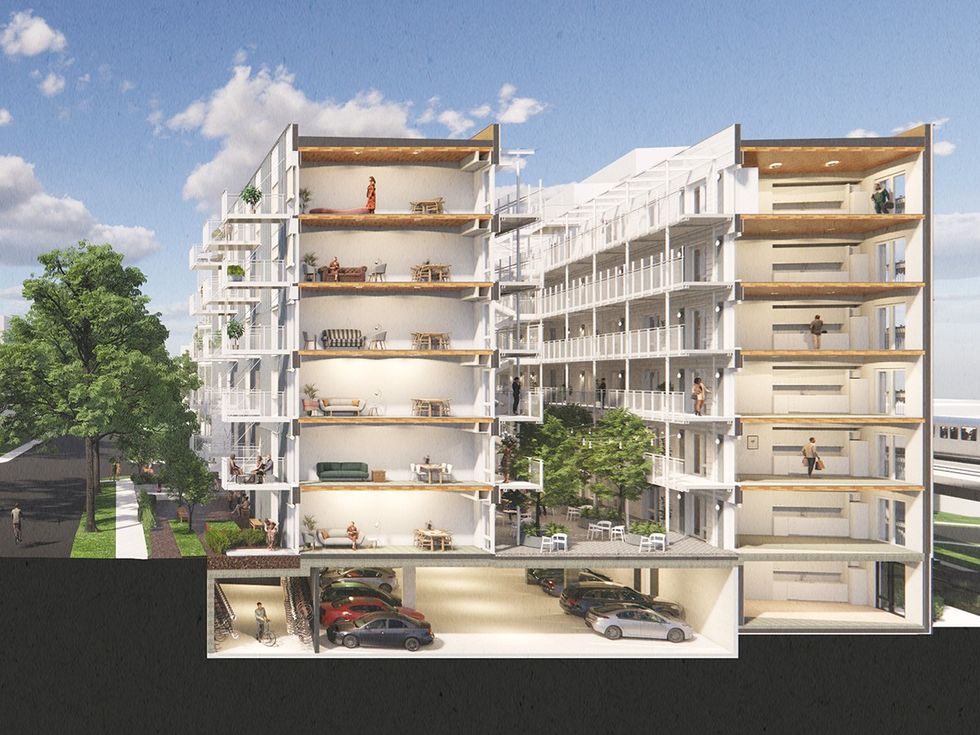
And the other obstacle that’s been around since factories started churning out pre-built homes is public bias about the look of them. Modular housing has come a long way over the years, says Manchisi.
“It’s not the 1980s concrete boxes anymore,” he says.
“Vienna House has three different[ly] sized balconies, three different aesthetics, and all three are modular,” he says. “We are building the same thing over and over again, but it looks different on the outside and everybody loves it,” says Manchisi.
Japan and European countries have been building innovative modular designs for years, and YouTube is full of time-lapse videos of buildings going up within hours. Canada just needs to adapt its policies and its financing systems to a way of construction that saves time, is less wasteful, offers greater energy efficiency, and could help address the supply issue while growing a Canadian manufacturing industry.
Market researcher David Eger, Altus Group’s Vice President for Western Canada, said that concurrent with the $25 billion, government should also open up large tracts of easy-to-develop land parcels in good locations; reduce requirements for consultant reports and studies; fast-track infrastructure for the servicing of the new developments; streamline building standards and approvals; and incentivize developers to build lower-priced but high quality housing.
He cites Toronto’s Mattamy Homes’ recent announcement to use modular for condo construction as a possible sign of the future. The company has invested in a high-tech modular manufacturing facility.
I believe we may eventually see other larger developers, like Mattamy Homes, build their own modular factories in order to speed delivery and reduce costs for their own projects,” said Eger, in an email. “With Mattamy Homes owning their own factory, they can control all aspects of design, quality, and delivery timelines.
“Of course, large developers will only do this if they can be certain it benefits the overall bottom line.”
